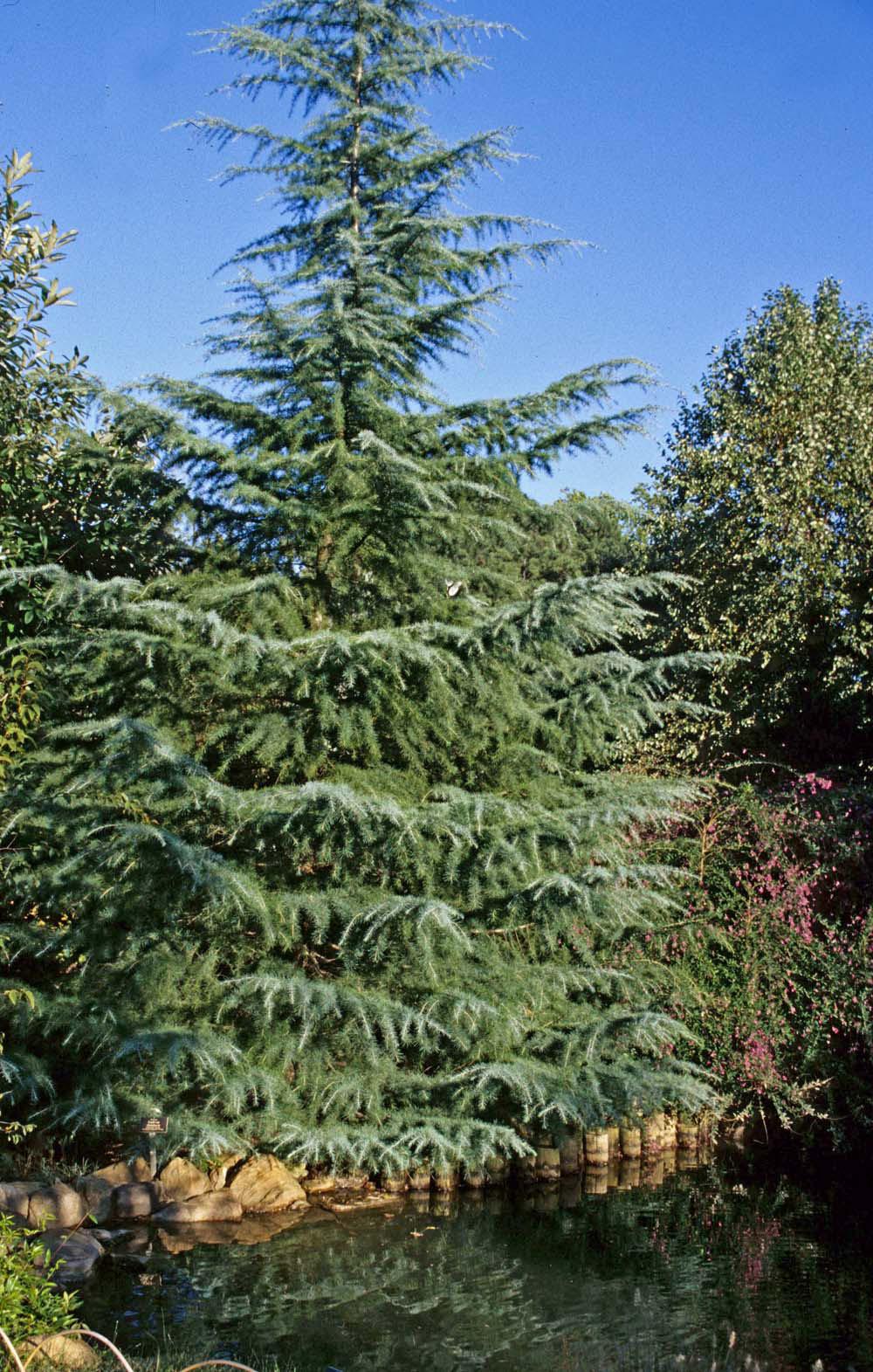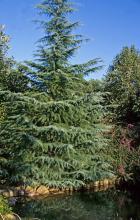Information Possibly Outdated
The information presented on this page was originally released on December 19, 2006. It may not be outdated, but please search our site for more current information. If you plan to quote or reference this information in a publication, please check with the Extension specialist or author before proceeding.
Deodar is picturesque in winter landscapes
By Norman Winter
MSU Horticulturist
Central Mississippi Research & Extension Center
The deodar cedar is one of my favorite trees in larger landscapes. Oddly enough, its country of origin is seen daily in the headlines. Can you guess? It's from Afghanistan and the Himalayas.
To me it's from Lucedale. Some of our great woody ornamental producers grow this tree. Most of you probably think of me as a tropical nerd or flower nut of some kind, but I'll readily admit that I may wake up a conifer freak some morning.
During the winter, my eyes seem to pick out every conifer in the landscape. Conifers are the cone bearing trees or shrubs, and when everything else goes brown or dormant, the evergreens really stand out. They are so important to the winter landscape.
Deodar cedar, or just deodar, is known botanically as Cedrus deodara and is a large, stately conifer with horizontal spreading branches and a conical shape. Though it can reach more than 150 feet tall, we typically see them maturing in the 50 to 70 foot range after 30 to 40 years.
Lower branches bend gracefully downward and then up again. The stiff, needle-like, silvery blue green leaves are about 2 inches long and borne in dense whorls.
I suspect most sold in the state are sold generically, which in this case is just fine. Several cultivars are popular. Argentea is fast growing and has silvery bluish gray foliage. Aurea is smaller, reaching to 30 feet and has golden yellow new foliage. Pendula has long, weeping branches and grows no higher than 10 feet. Shalimar released by the Arnold Arboretum is known for superior cold hardiness.
As already mentioned, deodar is native to the Himalayas where it grows at elevations of 3,500 to 12,000 feet above sea level. In the United States, it is cold hardy to about minus 15 degrees.
It is fairly fast growing for the first decade or two, reaching as high as 30 feet in its first 10 years. I think it is most beautiful at this stage. Between years 10 and 20, it will slowly broaden at the top. Our oldest specimens generally show some top dieback, but don't let this deter you from having 10 to 15 years of deodar bliss.
They perform best in full sun and are drought tolerant once established. This tree likes well-drained locations. Most deodar cultivars will grow into large, handsome specimen trees that need plenty of room. Plant them in the back of a large landscape so they can be seen in their entirety.
Deodar is the most popular landscaping cedar in America. In Asia, the essential oils extracted from deodar have been used as an antiseptic. The deodar looks beautiful in the winter landscape and especially during the holiday season. Give it a try in yours.


